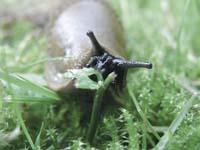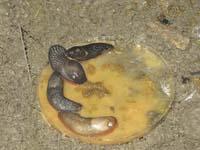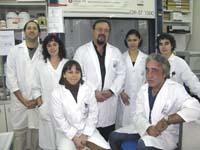Bareas, soil health meters

Does pollution channel evolution? That is the starting point of this group of the UPV, the initial hypothesis. According to studies, contamination appears to cause changes in mitochondrial DNA, but not in cellular DNA. The research now focuses on responding to the why of this inequality.
This study analyzed the adaptations developed by animals living in contaminated areas. To do this, different biomarkers of bazos living in contaminated areas have been analyzed.
From Welsh research
A few years ago UPV researchers participated in similar research in Wales. In this case, the calm populations of a copper mine and a national park were compared. The study found that animals from different places had a different cellular organization, morphologically the entire structure was similar, but the relative proportion between the different cell types of the animal digestive gland of contaminated media was different.
The study being carried out at the UPV/EHU analyzed the calm populations of the mining areas of Lanestosa and Karrantza. The soils in these areas have high concentrations of metals, mainly iron, zinc and lead, but also cadmium and chromium. They compare the wet areas of the miners with the populations of uncontaminated areas of Delika.
This study has also shown that the cellular organization of animals is different and they want to analyze whether this adaptation is plastic -- morphological adaptation and cell substitution -- or genetic. They collaborate with a Belgian group. This group analyzes molecular markers of bazos, such as mitochondrial DNA, to check whether animals in contaminated and uncontaminated areas are genetically equal. This will allow to detect if the calm zones of the mines have some type of adaptation that allows them to live in these conditions.

Ex situ bioassays
The Bareak have been used for conducting field studies, but for the realization of ex situ bioassays - laboratory tests with local soils -, in addition to owls, worms have been used. The worms of the species Eisenia foetida, which is the same that is used for composting, are used as control. This is because, since they have not suffered contamination (since they come from a controlled population), they have no adaptation to pollution and are used to compare it with those of bars. Thus, analyzing the response of biomarkers of both species, the aim is to know the impact of chronic pollution on the responses of these biomarkers.
For this type of testing, samples of real soils - in this case contaminated soils - are transferred to the laboratory and animals, spouts and worms are placed in different soils. In this way, they can know the influence of these soils on each other or the adaptations that animals develop.
The study of biomarkers of these animals aims to evaluate soil health, but not quality, which includes physical-chemical parameters but does not take into account the functionality of the environment. Currently, the legislation of the Basque Government uses only chemical analyses to classify soils. The objective of this group of the UPV/EHU is to promote an interpretation of the law based on biological effects, analyzing in an integral way the health of the soils --taking into account plant physiology, analytical chemistry, hydrogeology, etc.-.






